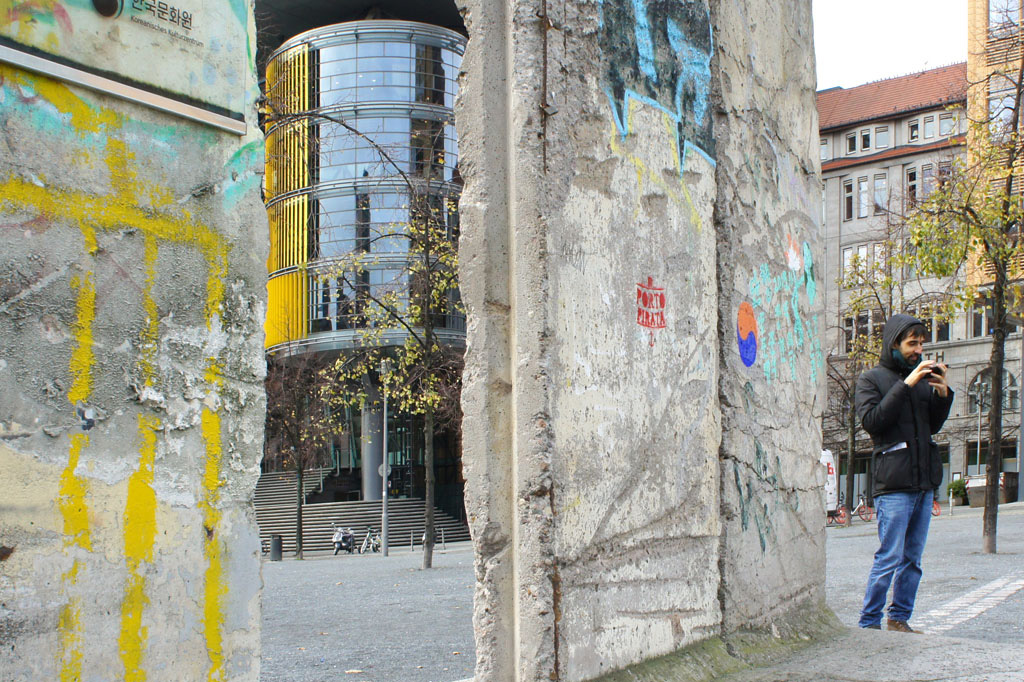From 1990 to 2020

Through traffic through the Brandenburg Gate in the 1990s Berlin Wall on November 12, 1989 (seen from the direction of West Berlin)
Watchtower type BT-11 in the former death strip (slightly offset from the original location at that time) “Wallpecker”
The wall was initially guarded after November 9, 1989 and uncontrolled border crossings were mostly prevented by the wall strip. In the first few weeks, the border troops tried to repair the holes made by the wall woodpeckers, while restrictions in the hinterland for local residents were no longer in effect.
The GDR opened ten new border crossings by November 14; including some in particularly symbolic places such as Potsdamer Platz, Glienicker Brücke and Bernauer Straße. Crowds gathered at these crossings, waiting for the opening to cheer every concrete element that was lifted out. On December 22, the wall section at the Brandenburg Gate was removed in the presence of Chancellor Helmut Kohl and Prime Minister Hans Modrow.
Germans and West Berliners were allowed to enter the GDR for the first time on December 24, 1989 from 0:00 a.m. up to this point the regulations regarding visa requirements and minimum exchange had still applied. In the weeks between November 9 and December 23, the GDR citizens were, in a sense, “more free to travel” than the West Germans.
The guarding of the wall became more and more relaxed over time; the uncontrolled crossing of the border due to the increasingly large holes was increasingly tolerated. At the same time, the practice at the transitions changed to a random check of the traffic flow. The process intensified particularly after the election to the Volkskammer on March 18, 1990. Until June 30, 1990, further new border crossings to West Berlin were opened. Wall at Dreilinden border crossing on October 3, 1990
On July 1, 1990, the day the monetary union came into force, the guarding of the wall and all border controls were stopped. The official demolition began on June 13, 1990 in Bernauer Strasse. Unofficially, the demolition of the wall on Bornholmer Strasse began due to construction work on the railroad. A total of 300 GDR border guards and – after October 3, 1990 – 600 Bundeswehr pioneers were involved. These were equipped with 175 trucks, 65 cranes, 55 excavators and 13 bulldozers. The demolition of the inner-city wall officially ended on November 30, 1990. Until then, according to estimates by the border guards, a total of around 1.7 million tonnes of building rubble had been incurred. In Berlin alone, 184 km of wall, 154 km of border fence, 144 km of signaling systems and 87 km of trenches were removed. What remained were six sections that were to be preserved as a memorial. The rest of the wall, especially on the Berlin-Brandenburg border, disappeared until November 1991. Painted wall segments with artistically valuable motifs were auctioned off in 1990 in Berlin and Monte Carlo.
